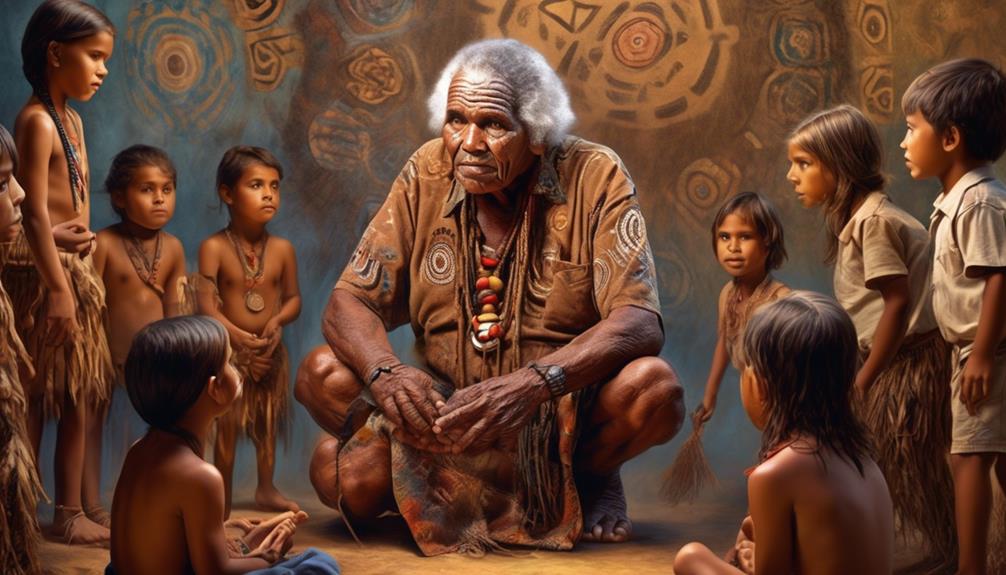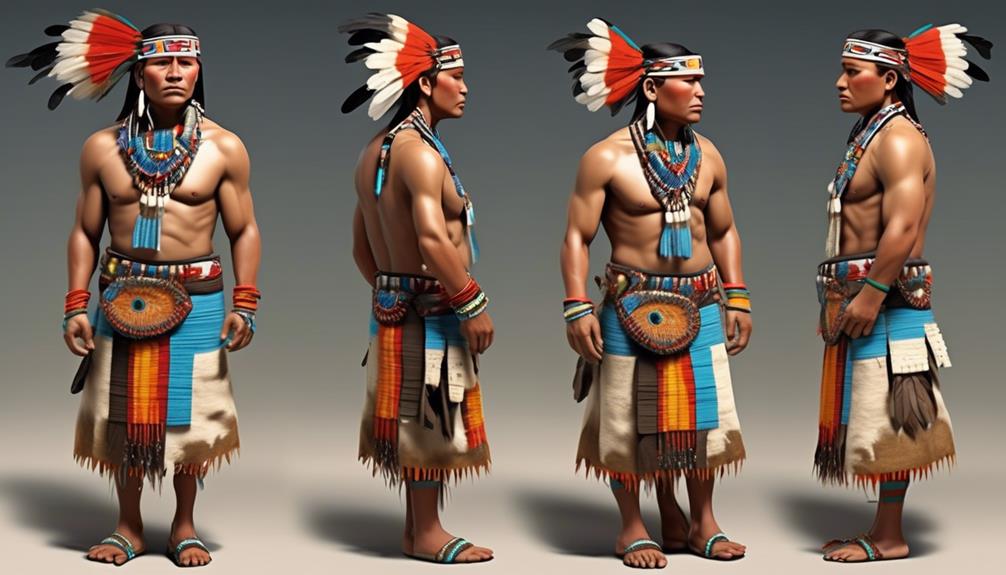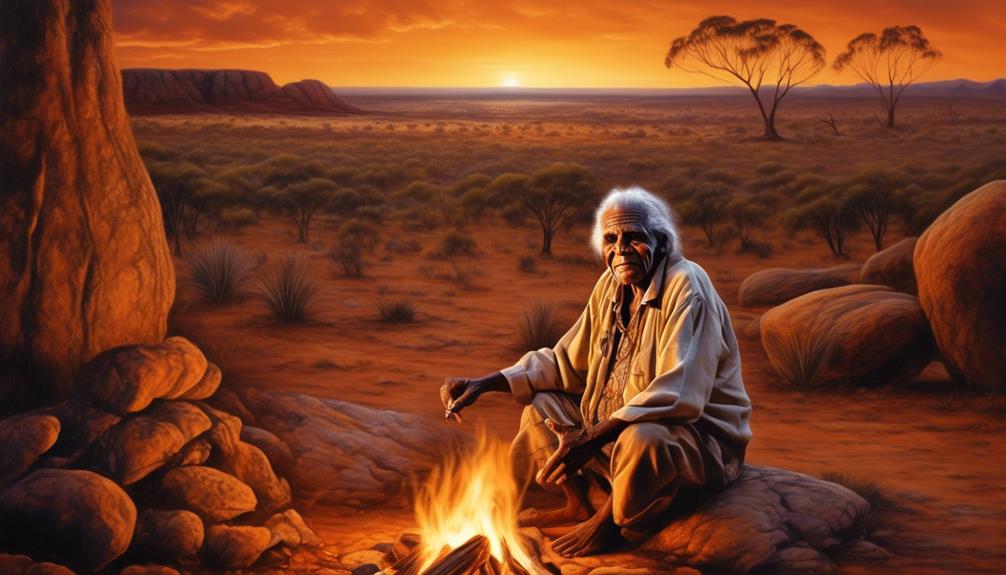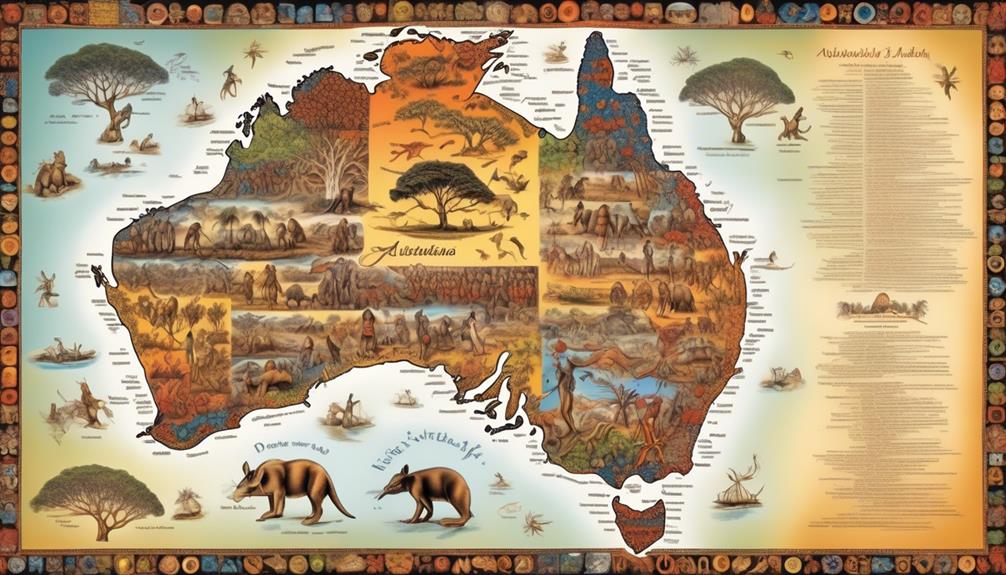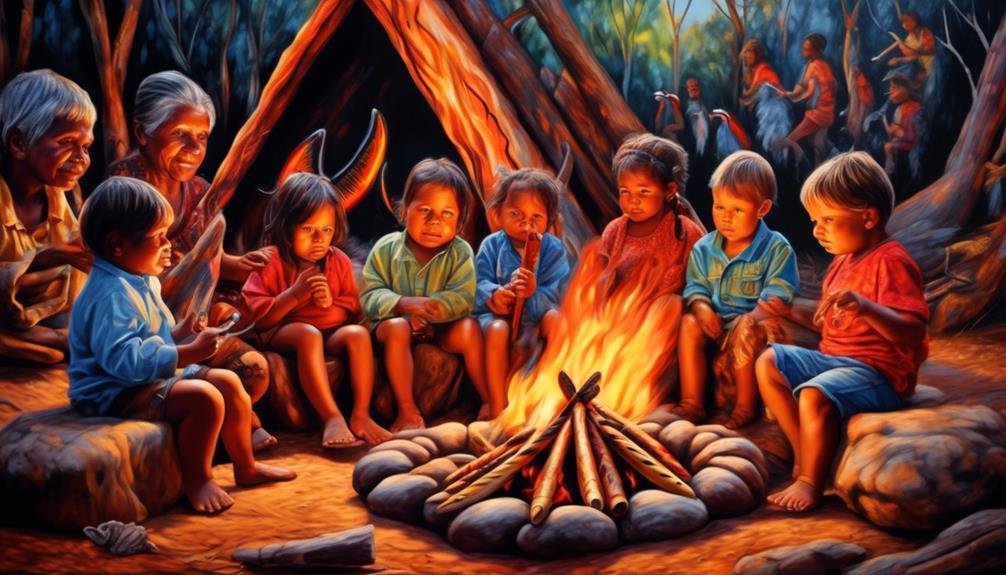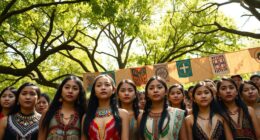“The quote ‘variety is the spice of life’ is indeed applicable to the diverse languages spoken by Aboriginal Australians.”
The linguistic landscape of the Aboriginal peoples is incredibly diverse, with hundreds of distinct languages and dialects spoken across the continent.
But what exactly are these languages, and how have they shaped the cultural and historical landscape of Australia?
In this discussion, we will explore the rich tapestry of Aboriginal languages, their historical significance, the challenges they face, and the ongoing efforts to preserve and revitalize them.
Key Takeaways
- Aboriginal Australians speak a diverse range of over 250 distinct languages and countless dialects, reflecting the cultural tapestry of indigenous peoples.
- The colonization and government policies have led to the decline and extinction of many Aboriginal languages, making language preservation efforts crucial.
- Language is central to Aboriginal cultural identity, carrying cultural knowledge and traditions, and its loss has a significant impact on Aboriginal communities.
- Efforts to preserve Aboriginal languages include documentation, language immersion programs, integration into school curriculums, and the development of language learning apps and online resources.
The Diversity of Aboriginal Languages
Aboriginal languages exhibit a remarkable diversity, reflecting the rich cultural tapestry of Australia's indigenous peoples. With over 250 distinct languages and countless dialects, each group has its own unique linguistic heritage, serving as a powerful expression of cultural connection and identity. The diversity of these languages is truly awe-inspiring, showcasing the deep historical roots and profound knowledge systems of Aboriginal communities.
In recent years, there's been a growing interest in linguistic revival efforts aimed at preserving and revitalizing these endangered languages. Many indigenous communities are working tirelessly to reclaim and pass on their ancestral languages to younger generations, recognizing the invaluable role language plays in maintaining cultural traditions and knowledge. Through language revitalization programs and initiatives, there's a concerted effort to ensure that these diverse Aboriginal languages continue to thrive, further strengthening the cultural connection between past, present, and future generations.
Comparatively, the linguistic diversity among Aboriginal languages far surpasses that of many other indigenous cultures worldwide, underscoring the intricate and profound nature of Australia's linguistic landscape. As we continue to learn and appreciate the vast array of Aboriginal languages, it becomes increasingly evident that their preservation is vital not only for the Aboriginal peoples but for humanity as a whole.
Historical Context of Aboriginal Languages
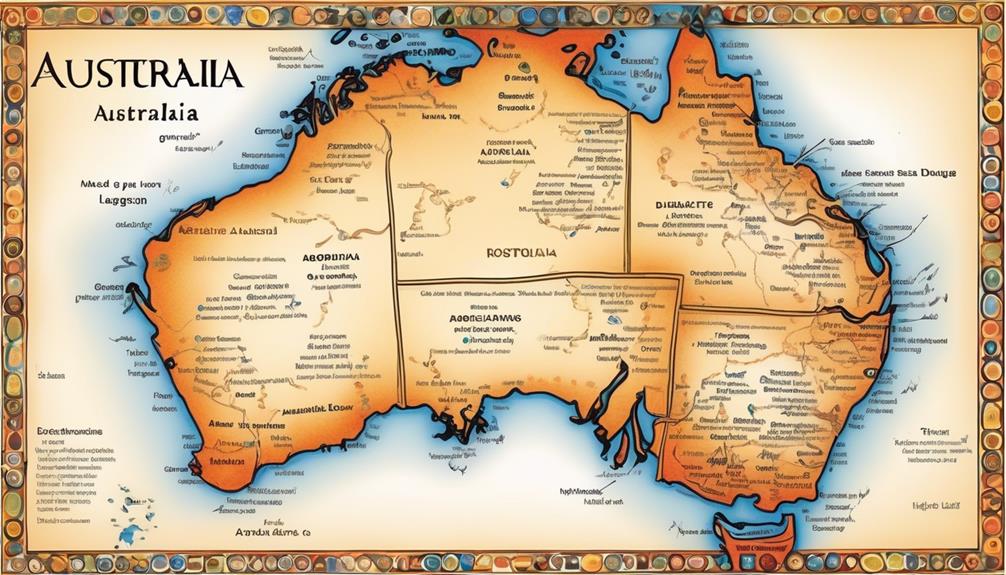
Reflecting on the rich linguistic tapestry of Australia's indigenous peoples, it's crucial to understand the historical context that has shaped the diverse range of Aboriginal languages. The historical context of Aboriginal languages is a complex and multifaceted story, influenced by both internal and external factors.
- Colonization: The arrival of European settlers in Australia brought significant disruption to Aboriginal languages, leading to the decline and extinction of many languages.
- Government Policies: The implementation of assimilation policies and the forced removal of Aboriginal children from their families further eroded the use of indigenous languages, impacting cultural identity.
- Language Preservation Efforts: In recent decades, there's been a growing recognition of the importance of preserving Aboriginal languages, leading to various language preservation programs and initiatives.
- Cultural Identity: Aboriginal languages are integral to the cultural identity of indigenous communities, and efforts to revitalize and maintain these languages are closely tied to preserving cultural heritage.
Understanding the historical context of Aboriginal languages is essential for recognizing the challenges faced by indigenous communities in preserving their linguistic and cultural heritage. Efforts to support language preservation play a crucial role in promoting cultural diversity and honoring the rich traditions of Australia's first peoples.
Significance of Aboriginal Languages
As we delve into the profound significance of Aboriginal languages, we uncover their pivotal role in shaping the cultural, social, and spiritual fabric of Australia's indigenous communities. The cultural preservation embedded within these languages is fundamental to maintaining the rich diversity of traditions, stories, and knowledge passed down through generations. Aboriginal languages are the vessels through which linguistic heritage is upheld, connecting individuals to their ancestors and the land they've inhabited for millennia.
The significance of Aboriginal languages extends beyond mere communication; it embodies the essence of indigenous identity and worldview. These languages encapsulate unique concepts and philosophies that are often untranslatable, enriching our understanding of human expression and thought. Furthermore, they serve as a testament to the resilience and strength of Aboriginal communities, resisting the erosion of their cultural identity despite historical adversities.
In recognizing the profound significance of Aboriginal languages, we acknowledge the imperative role they play in fostering understanding and respect for indigenous cultures. Preserving and revitalizing these languages isn't only a matter of linguistic diversity but a commitment to honoring the heritage and wisdom encapsulated within them.
Challenges Facing Aboriginal Languages
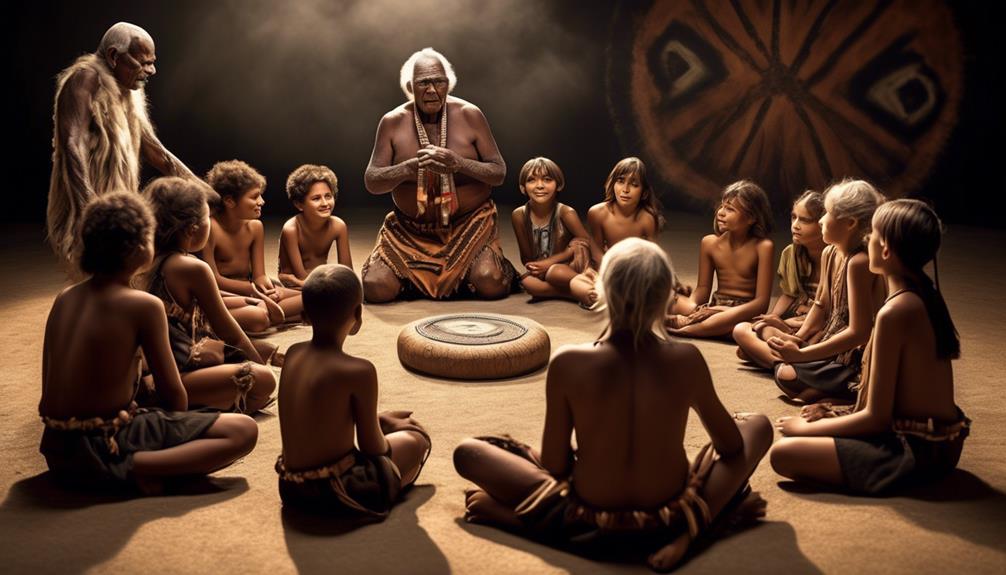
Exploring the challenges facing Aboriginal languages reveals the complex hurdles threatening the preservation and vitality of these vital linguistic assets within indigenous communities. The obstacles include:
- Language Preservation: Many Aboriginal languages are endangered due to a lack of intergenerational transmission. With younger generations favoring dominant languages, there's a risk of these languages becoming extinct.
- Limited Resources: Indigenous communities often face resource constraints in their efforts to preserve and revitalize their languages. This includes a lack of funding for language programs and materials.
- Cultural Revival: The challenges extend beyond language itself to encompass broader cultural revival. Preserving languages is intertwined with maintaining traditional knowledge, practices, and beliefs.
- Digital Divide: The digital era presents both opportunities and challenges. While technology can aid in language preservation, it also brings the risk of further marginalizing indigenous languages in the online space.
Addressing these challenges requires collaborative efforts from governments, educational institutions, and indigenous communities. It involves not only linguistic initiatives but also broader support for indigenous cultures and knowledge systems.
The future of Aboriginal languages depends on concerted action to overcome these obstacles and ensure their preservation for generations to come.
Efforts to Preserve Aboriginal Languages
Efforts to preserve Aboriginal languages have been met with diverse strategies and initiatives aimed at revitalizing these linguistic treasures within indigenous communities. Various preservation methods have been employed, including documentation through audio recordings, videos, and written materials. Additionally, language immersion programs have been established to create environments where community members can learn and practice their native languages in everyday situations. These programs not only teach the language but also immerse individuals in the cultural context, contributing to a more comprehensive cultural revival.
Comparatively, some communities have integrated language classes into their school curriculums, ensuring that younger generations have access to their ancestral languages. Furthermore, technological advancements have been harnessed to develop language learning apps and online resources, making the languages more accessible to a wider audience. These efforts not only aim to preserve the languages but also to foster a sense of pride and identity within indigenous communities.
As we continue to explore preservation methods, it's crucial to recognize the significance of these languages in the broader context of cultural revival and the well-being of indigenous communities.
Frequently Asked Questions
How Do Aboriginal Australians Communicate With Each Other if They Speak Different Languages?
When Aboriginal Australians speak different languages, they often use interpreters to facilitate communication. This helps preserve linguistic diversity and fosters cultural exchange.
Despite the language barrier, communication is made possible through the use of interpreters who help bridge the gap between different languages. This practice not only allows for meaningful interactions but also promotes understanding and appreciation of the rich linguistic and cultural heritage within Aboriginal communities.
Are There Any Similarities or Commonalities Among Different Aboriginal Languages?
Certainly!
Commonalities among different Aboriginal languages are found in cultural and linguistic diversity. Despite the multitude of languages, many share similar grammatical structures and vocabulary. This linguistic diversity reflects the rich and varied cultural heritage of Aboriginal Australians.
While each language is unique, these commonalities provide insights into the interconnectedness of different Aboriginal communities and their shared history.
What Are the Main Factors Contributing to the Decline of Aboriginal Languages?
Language preservation is crucial for safeguarding cultural identity. Factors contributing to the decline of Aboriginal languages include colonization, forced assimilation, and lack of institutional support. These have led to a loss of linguistic diversity and traditional knowledge.
However, efforts are being made to revitalize and preserve these languages, recognizing their significance in maintaining cultural heritage. It's essential to continue supporting these initiatives to ensure the preservation of Aboriginal languages and their cultural identity.
How Are Aboriginal Languages Being Integrated Into Mainstream Education and Media?
Integration of Aboriginal languages into education and media is crucial for their preservation and revitalization.
In education, incorporating these languages helps Indigenous students connect with their culture and fosters a sense of belonging.
In media, featuring Aboriginal languages promotes cultural diversity and understanding.
However, challenges such as limited resources and varying dialects must be addressed for successful integration.
Is There a Standardized Written Form for Aboriginal Languages, or Are They Primarily Oral?
In Aboriginal languages, there isn't a standardized written form, as they're primarily oral. Despite this, efforts have been made to develop written forms for some languages.
Each language exhibits unique characteristics, yet commonalities exist among them. The absence of a standardized written form doesn't diminish the richness and complexity of these languages.
Embracing their oral tradition is vital, and the development of written forms should complement, not overshadow, their oral communication.
Conclusion
In conclusion, it's imperative that we recognize the rich and diverse Aboriginal languages that have shaped Australia's cultural landscape.
From the historical significance to the present day challenges, these languages hold a wealth of knowledge and tradition.
As we continue to work towards preserving and revitalizing these languages, we must remember that they aren't just words, but living connections to the past, present, and future of Aboriginal communities.
Their value can't be overstated.
Mary is a passionate writer who brings creativity and a fresh perspective to our team. Her words have the power to captivate and inspire, making her an essential contributor to our content. Mary’s commitment to storytelling and dedication to promoting Indigenous culture ensures that her work touches the hearts of our readers. We’re fortunate to have her as part of our team.
